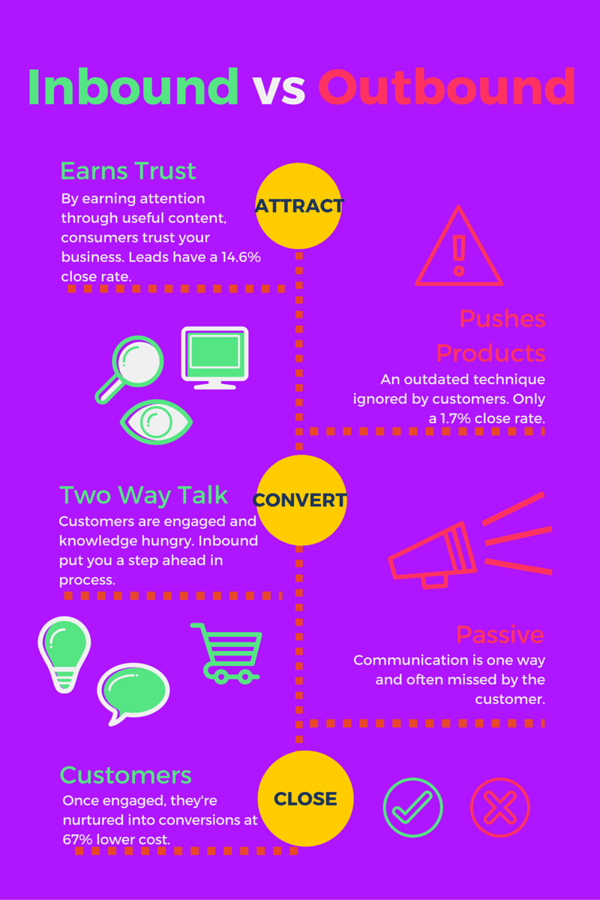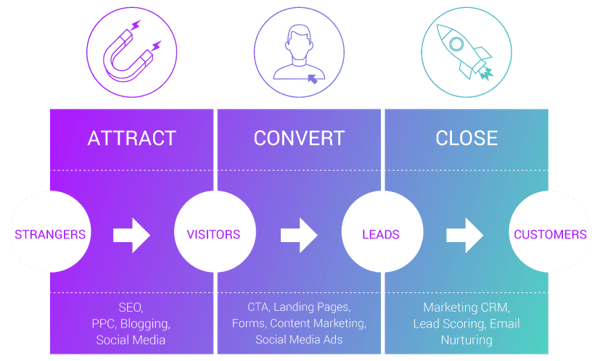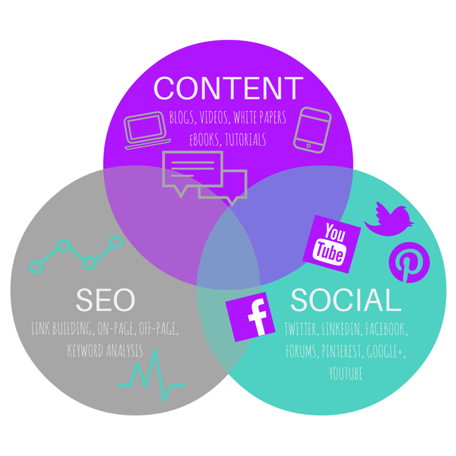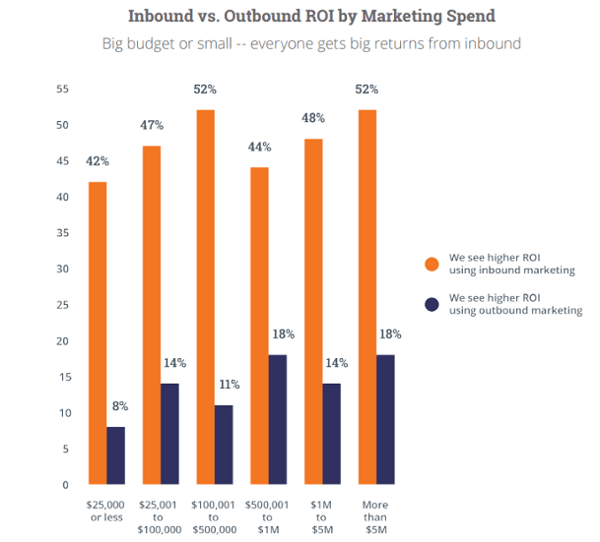You are a global organization. You have decided to go inbound with your marketing and sales...
Originally published: Apr 2016
Updated: Nov 2019
Inbound marketing often comes up against lots of objections. Most of these are rooted in the problem that successful inbound strategies rely on a change of mindset. If you’re a little hesitant about adopting inbound marketing, you (hopefully) won’t be at the end of this blog.

Here are some of the common misconceptions about inbound marketing that you may face and some ways to overcome them:
- “We don’t need to change from traditional marketing methods which work just fine.”
- “I’ll only need one person to look after all things inbound marketing.”
- “Inbound marketing costs too much.”
- “The results just take too long.”
- "I can't create remarkable content for my business as it isn't interesting or exciting enough."
- “This change of approach is too risky.”
- “Our CEO is old-school. He’d never sign this off.”
1. "We don't need to change from traditional marketing methods which work just fine."
Your boss will probably say: “Traditional, outbound advertising hasn't done any harm since, well, forever. So why change?" Advertising agencies have been around for a couple of hundred years, true. But outbound, intrusive advertising became what we know it as today when television granted advertisers access into people's homes.
But people's behaviour is changing. We record TV onto hard drives to watch when we want. We skip adverts. We download things on demand. We make our own schedules. And this is only going to grow as manufacturers and broadcasters take us down the on-demand/smart TV route.
The psyche of society - and with it your potential consumers - is changing too. Look at millennials and teens when they don't know the answer to something; "One second, let me Google it." The rise of micro-blogging and pictorial sites such as Instagram and Pinterest, all accessed via mobile devices, place the power in the eye of the beholder.
Or to be more exact, in the hand of the person holding the smartphone.
"You're coming at me to tell me why I should give you my money? I'll just head over and listen to what that guy is telling me for free instead, thanks." And that guy will gain the person's trust and when it's time for a purchase.
So, where do you think they will head?

2. “I’ll only need one person to look after all things inbound marketing.”
Don’t set unrealistic expectations of how you can execute inbound marketing. There’s so much involved in inbound marketing which is why it works. You can’t just dump it all on one person and expect them to do it all.
Inbound marketing represents many skill sets in one. SEO, social media, project management, audio and video production, content writing, design, development...I could go on. It’s virtually impossible for one person to have the time or skill to handle everything.
If you want to implement an inbound marketing strategy, you need a team. Either hire specialists in every single area to form an in-house team, or look for an expert agency that already has an experienced team with the knowledge and resources.
3. "Inbound marketing costs too much."
Encompassing all aspects of the inbound methodology does involve a lot of upfront costs. Software, writers and designers, monitoring systems and campaign planning all incur a cost which takes time to build results.
But it’s a long-term strategy so you need to be patient.
The temptation is to go for a "quick-win" via outbound methods. For what you may spend setting up an inbound campaign (and by campaign, I actually mean building the whole methodology, mindset and maintaining it), you could generate a large number of leads in one short, sharp outbound campaign.
The trouble is that these tend to be short term, low-quality leads. To maintain this rate of conversion means maintaining a large outbound marketing budget.
The difference with inbound is that your content is out there and accessible forever. This is becoming more important as consumers’ - nay, people's - changing habits and behaviours mean they choose what content to look at and listen to.
The leads that come from inbound are nurtured, interested and high-quality contacts which result in more conversions.

4. “But the results just take too long.”
Granted, the whole idea is built around it taking time. Attracting people to your content, coaxing their contact details out of them, nurturing them via follow up reach outs, saying yes when they've enjoyed getting to know you and they come to you to make a transaction…
But you only nurture people who want to be reached. Purely in terms of time, it does take longer. But to look at a campaign based on time alone isn't looking at the full picture.
When you look at the more important numbers - efficiency of conversions and cost per lead - inbound marketing is up to 61% more effective than outbound. HubSpot also states that only 18% of marketers say outbound practices provide the highest quality of leads for sales.
I’m not saying outbound should be neglected completely - it's still relevant but is on the wane. Your company's marketing budget could be spent more wisely. To include inbound is to include a more holistic, efficient and slow-burning approach.
It’s the way people now want to be reached.
5. "I can't create remarkable content for my business as it isn't interesting or exciting enough."
If you can operate as a business, whether B2B or B2C, people pay for your services or product. It means there’s something interesting about your business. Also, expand your scope to cover your industry generally.
Educating people by giving them the answers they need makes them more likely to remember you when they need more than free advice in the future. People are nice like that.
This is made effective by only targeting your personas. Not everyone will be interested in your business but you're not marketing to everybody, just those with a problem that your business can solve.

6. "This change of approach is too risky."
Once you focus on your personas, you can use your knowledge and expertise to create useful, well-detailed content that helps people. It’s not risky as it’s informative, genuine knowledge that can only make you look good to future customers.
They’ll be following your brand prior to realising they need to purchase and will turn to you once nurtured into the closing stage. Really, it's a risk not to be doing this and rely purely on discounts and outbound advertising that’s usually ignored.
7. "Our CEO is old-school. He'd never sign this off."
This is something we notice a lot. The attitude most probably comes from two places; people who benefit from maintaining the old, soon to be outdated status quo or people who don't behave in a "new fashion" way themselves.
Why not show your CEO some statistics?
- It's cheaper than outbound marketing techniques.
- Inbound leads cost at least 67% less than outbound.
- Improves your own understanding of your customers - building repeat business.
- Focuses advertising to your ideal customers so is more efficient.
- Inbound leads have a close rate of 14.6%. Outbound has a rate of 1.7%.

Or look at this blog post which goes into more depth.
One thing you need to keep in mind, however, is that inbound results do take time. You can’t expect it to transform your results overnight. To actually show you what a typical first year in inbound may look like, download our ‘A Year in Inbound’ slide deck.
See what a typical year in inbound looks like
There’s a lot that goes into an inbound strategy which makes it work. There are different phases each with their own components which all contribute to the success of a campaign. Our download will give you a visual guide on what to expect throughout the year.
It includes what to expect when content is created, how to amplify it, tips on boosting your strategy and so much more.
To get your free copy, click on the link below.


